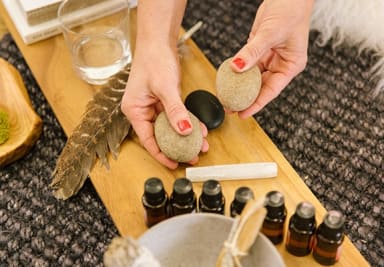I Tried The Wim Hof Method For 3 Months — This Is What Happened

Wim Hof, also known as "The Iceman," is an athlete who has set over two dozen world records for withstanding extreme temperatures, completing a marathon in below-zero temperatures, and climbing Mount Everest and Kilimanjaro wearing only shorts.
Wim credits his superhuman feats to a specific kind of breathwork and focused meditation, and he believes that anyone can develop similar abilities by using them. I tried these methods for three months; here's my review.
What made me want to try the Wim Hof Method in the first place.
The Wim Hof Method (WHM) is touted as having many health benefits, including accelerating the healing process, reducing stress, improving sleep, normalizing hormones, improving sports performance, enhancing immunity, and more.
Cold therapy alone has been used medicinally for thousands of years, and the benefits include reduced inflammation1, improved recovery2, increased thermogenesis, increased life span3 in mice and flies4, improved sleep5, reduced pain6, and reduced anxiety and depression7.
Wim has worked with scientists to test his methods in controlled studies, and they've discovered some pretty incredible things: Namely, that humans have the ability to voluntarily activate their autonomic nervous system and actively influence their immune response and consciously control their stress and pain response8 using a regimen of breathwork, meditation, and cold therapy. Needless to say, I was intrigued.
How I went about trying the Wim Hof Method.
I started with the breathing and cold showers but wasn't having the experience that he and others were sharing, so I got discouraged, distracted, and stopped altogether. Then a friend sent me a text about Wim, and I decided to give it another try, but this time I committed to the advanced breathwork and the icy-cold immersion (commitment is one of the three pillars of the WHM, along with breathing and cold therapy).
When I first went into the water at a temperature of about 48 degrees Fahrenheit, I lasted for one minute before my body started shaking and my teeth chattering. My mind and body were screaming, "Get out, and get out quick!"
I knew why. When I was a young boy, I had a few scary experiences with cold water in the winter, sledding in the snow and playing ice hockey. A couple of times I almost drowned in an ice-covered lake, but my brother saved me. As long as I can remember, I never liked cold water, and I got cold very quickly in freezing environments. I recognized I have some deep fears around cold water.
The following day I was not excited about getting back in the water, but Wim says to be patient, to commit, and know that cold water is your friend. So as I was going back in the second day, I started saying aloud, "My friend, my friend, I'm going back to my friend" to offer myself a little positive reinforcement. For the first week, it was very difficult for me, but I set my mind and opened my heart, and on the seventh day, I experienced a moment in the water I will never forget: I surrendered to the feeling, and I felt comfortable in the water. I was saying over and over, "I am one with the water." I felt happy, content, and accomplished. I thought, "This must be what Wim is talking about."
What the Wim Hof Method taught me.
Over the last three months, I have not missed a day of the meditation, breathwork, and cold exposure. I'm now able to stay in the cold water for 20 minutes comfortably. Considering I already lived a healthy lifestyle, the effects that I'm experiencing are more emotional and psychological. I find myself more patient, peaceful, and calm in my body—in and out of the water.
Wim says that this method may help with PTSD, anxiety, bipolar disorder, addiction, and other psychological issues, and I believe this now. I feel my "fight or flight" response and nervous system have been altered, in line with scientific studies done on Wim and others applying his breathwork, meditation, and cold immersion methods. I feel I have a new spiritual relationship with water and look forward every morning to starting my day in the freezing cold. I've even had a few moments in the water when I started crying and coughing and releasing what felt like suppressed emotions. I feel this is a spiritual practice for me now because when I'm in the water, I feel present, alive, and awake to myself and my surroundings.
When I wake up in the morning, if I feel tired or lazy or moody or just not feeling my best, after I get out of the cold water, my perceived negative energies are gone. I feel vibrant, alive, and excited for my experience that day.
I feel there's even more potential for healing and well-being with the WHM, and I intend to continue cold-water immersion for the rest of my life.

Eric Nies is a former television personality who has spent the past two decades traveling around the world studying various approaches to energy healing.
8 Sources
- https://pubmed.ncbi.nlm.nih.gov/25526231-mechanisms-and-efficacy-of-heat-and-cold-therapies-for-musculoskeletal-injury/
- https://pubmed.ncbi.nlm.nih.gov/22336838-cold-water-immersion-cryotherapy-for-preventing-and-treating-muscle-soreness-after-exercise/
- https://pubmed.ncbi.nlm.nih.gov/17082459-transgenic-mice-with-a-reduced-core-body-temperature-have-an-increased-life-span/
- https://pubmed.ncbi.nlm.nih.gov/823384-effects-of-temperature-on-the-life-span-vitality-and-fine-structure-of-drosophila-melanogaster/
- https://pubmed.ncbi.nlm.nih.gov/18192289-skin-deep-enhanced-sleep-depth-by-cutaneous-temperature-manipulation/
- https://www.ncbi.nlm.nih.gov/pmc/articles/PMC3781860/
- https://www.ncbi.nlm.nih.gov/pmc/articles/PMC2734249/
- https://www.sciencedirect.com/science/article/pii/S1053811918300673?via%3Dihub#!
